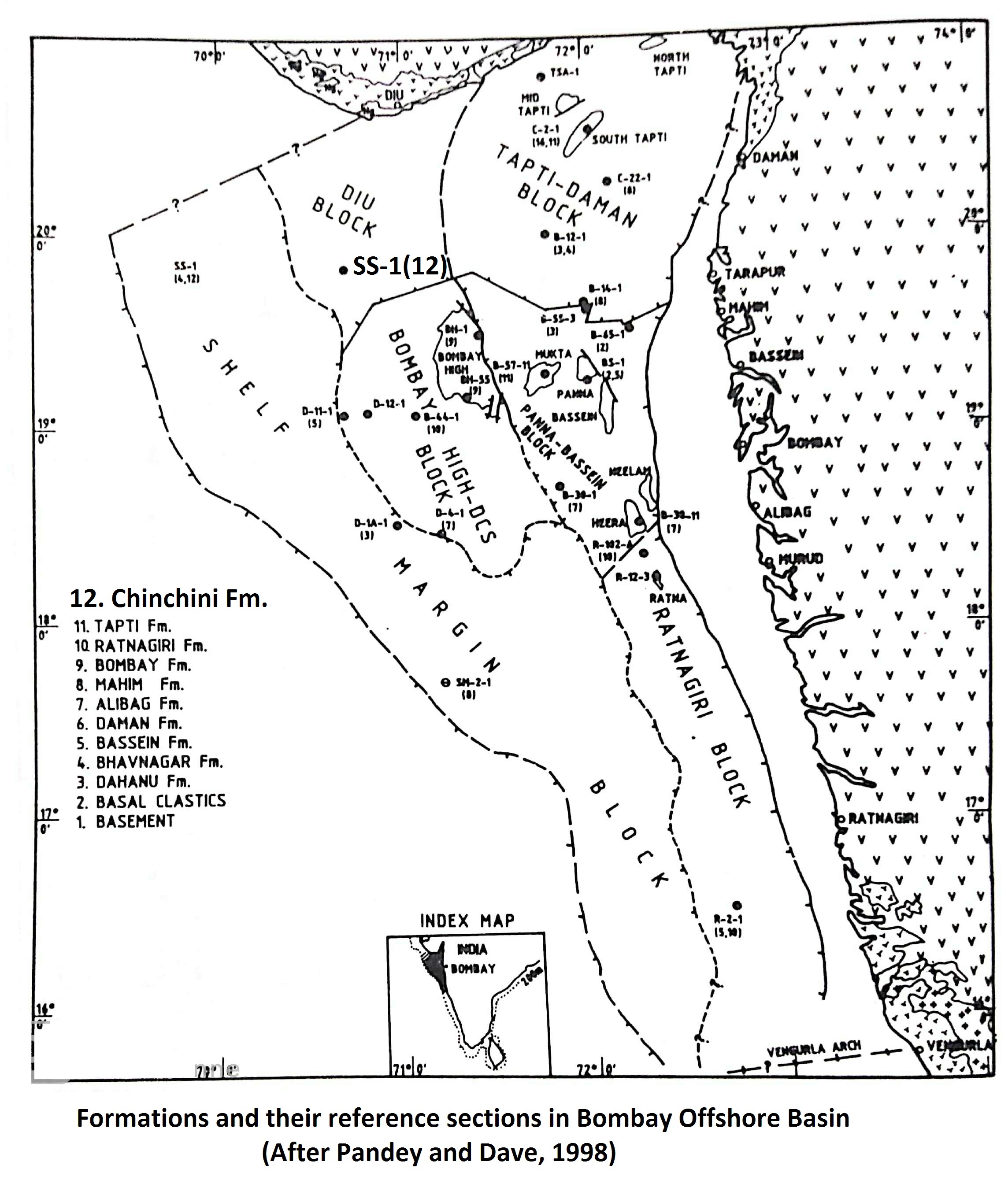Ratnagiri Fm
Type Locality and Naming
Well R – 2 – 1, (depth interval 453 - 796m). [Original Publication: Basu, D.N., Banerjee, A and Tamhane, D.M. 1982. Facies distribution and petroleum geology of Bombay Offshore Basin, India. Journal Petroleum Geology, Volume 5, pp. 57-75.]
[Figure: Lithostratigraphy in Mumbai Offshore blocks (from NDRDGH.gov.in; after Jitendra Misra, 2009)]
Lithology and Thickness
Limestone. Monotonous limestone sequence with thin shale layers. In the type section, the limestone is predominantly biomicritic with moldic and vugular porosity. The shale is pyritiferous. In the type area, it is only 343 m thick. The thickness gradually increases towards the north Ratnagiri and DCS areas up to 1500 m.
[Figure 1: Formations and their reference sections in Mumbai Offshore Basin (after Pandey and Dave, 1998)]
Relationships and Distribution
Upper contact
The upper contact of the Ratnagiri Fm with the Chinchini Fm is sharp and unconformable.
Regional extent
GeoJSON
Fossils
In type well, top of the Ratnagiri Fm coincides with the highest occurrence of Miogypsina antillea / Cycloclypeus indopacificus.
Age
Depositional setting
The formation was deposited under shallow shelf lagoon to shallow open shelf environment. In the Ratnagiri area, the formation was deposited over a carbonate platform, flushed by minor tidal channels and frequently exposed to swampy and subaerial conditions.
Additional Information

